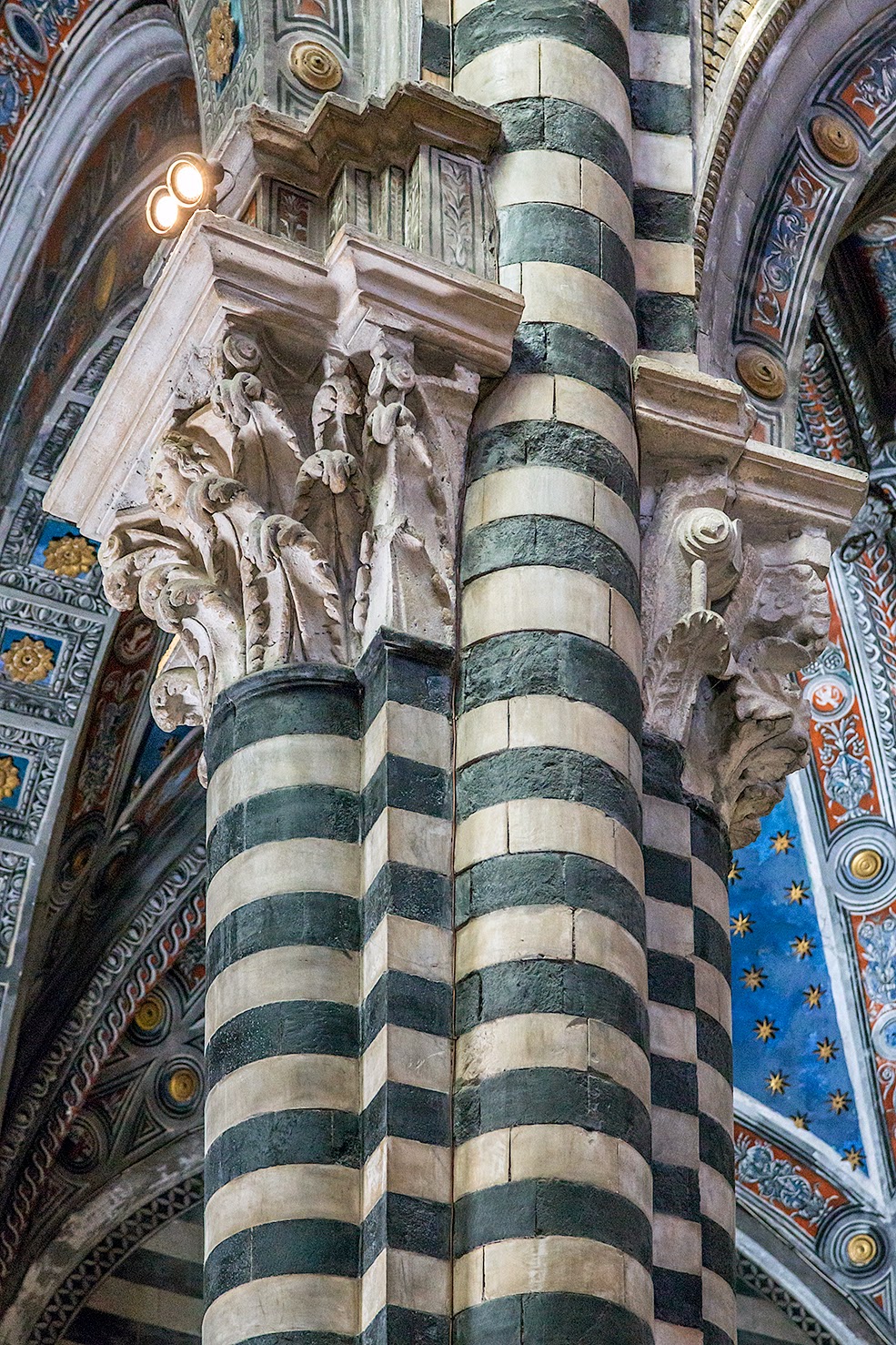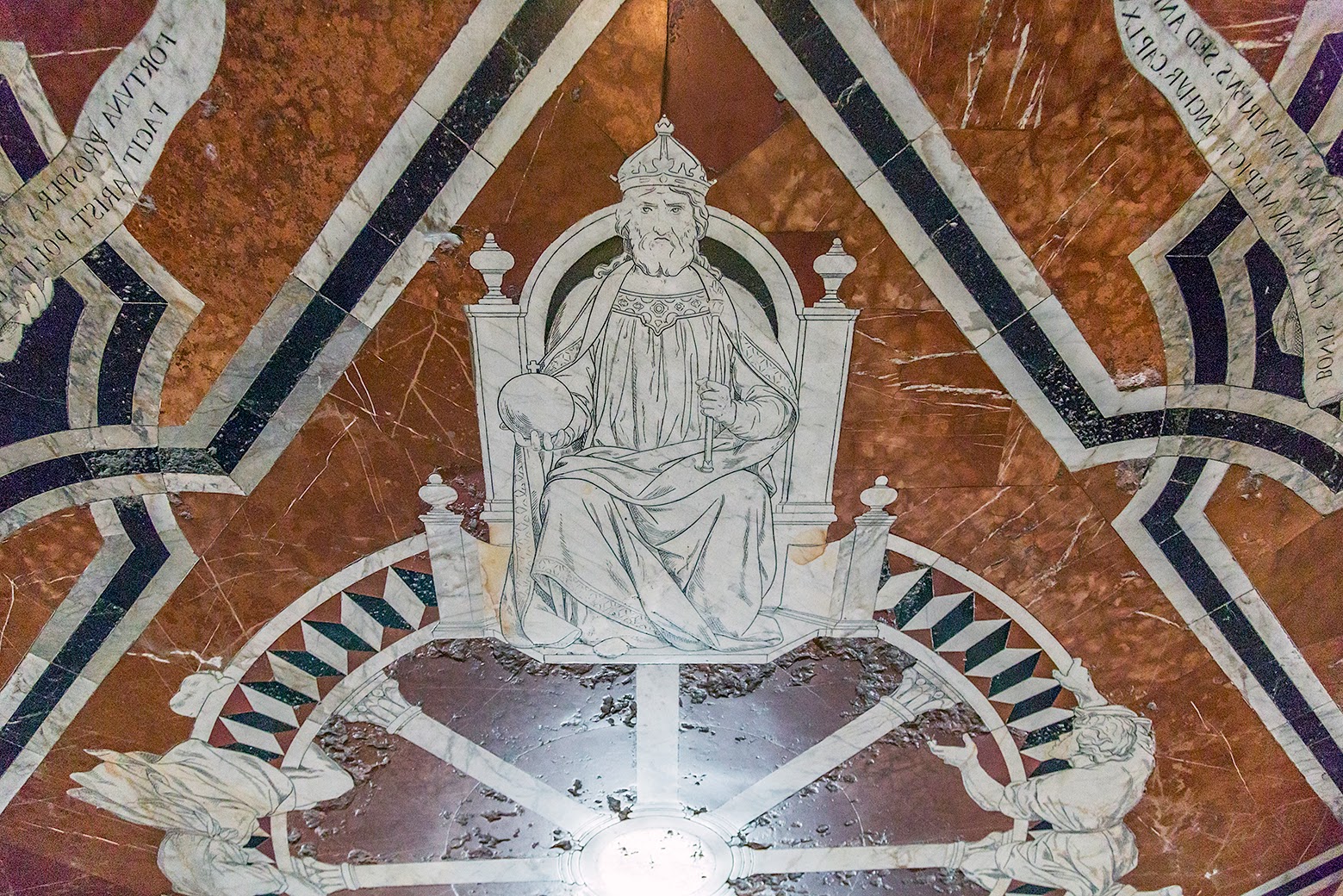Siena Cathedral (Duomo di Siena) is a medieval church in Siena, Italy, dedicated from its earliest days as a Roman Catholic Marian church, and now dedicated to Santa Maria Assunta (Holy Mary, Our Lady of the Assumption).
The cathedral itself was originally designed and completed between 1215
and 1263 on the site of an earlier structure. It has the form of a Latin
cross with a slightly projecting transept, a dome and a bell tower. The
dome rises from a hexagonal base with supporting columns. The lantern
atop the dome was added by Gian Lorenzo Bernini.
The nave is separated from the two aisles by semicircular arches. The
exterior and interior are constructed of white and greenish-black marble
in alternating stripes, with addition of red marble on the facade.
Black and white are the symbolic colors of Siena, originally linked to black and white horses of the legendary city's founders, Senius and Aschius.
The facade of the Siena Cathedral is one of the most fascinating in all of Italy and certainly one of the most impressive features in Siena.
Each of the cardinal points (west, east, north, and south) has their
own distinct work; by far the most impressive of these is the west
facade. Acting as the main entryway to the Duomo proper, it boasts three
portals; the central one is capped by a bronze-work sun.
In the interior the pictorial effect of the black and white marble
stripes on the walls and columns strikes the eye. Black and white are
the colors of the civic coat of arms of Siena. The capitals of the columns in the west bays of the nave are
sculpted with allegorical busts and animals. The horizontal molding
around the nave and the presbytery contains 172 plaster busts of popes dating from the 15th and 16th centuries starting with St. Peter and ending with Lucius III.
The hexagonal dome is topped with Bernini's gilded lantern, like a golden sun. The marble high altar of the presbytery was built in 1532 by Baldassarre Peruzzi. The pulpit is made of Carrara marble and was sculpted between the end of 1265 and November 1268 by Nicola Pisano and several other artists.
The inlaid marble mosaic floor is one of the most ornate of its kind in
Italy, covering the whole floor of the cathedral. This undertaking went
on from the 14th to the 16th centuries, and about forty artists made
their contribution. The floor consists of 56 panels in different sizes.
Most have a rectangular shape, but the later ones in the transept are
hexagons or rhombuses. The uncovered floor can only be seen for a period of six to ten weeks each year, generally including the month of September. The rest of the year, they are covered and only a few are on display. We were lucky enough to see the entire floor uncovered!
Adjoining the cathedral is the Piccolomini Library, housing precious
illuminated choir books and frescoes painted by the Umbrian Bernardino
di Betto, called Pinturicchio, probably based on designs by Raphael. The frescoes tell the story of the life of Siena's favourite son, cardinal Enea Silvio Piccolomini, who eventually became Pope Pius II.












































